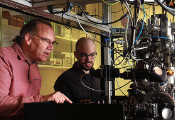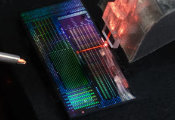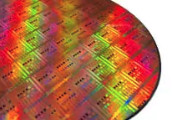Boson Systems Break the Finite Speed Limit
July 25, 2024 -- The propagation of information can speed up over time in systems of certain quantum particles, a theoretical analysis by RIKEN physicists has revealed.
Having a Zoom call with someone on Mars would be challenging because of the 3-to-20-minute delay involved, but the delay would balloon to nearly 3 hours for Uranus. Switching to a better internet provider wouldn’t help—these time lags are unavoidable since, according to Einstein, nothing can outpace light.
The two delays represent two points on a ‘light cone’ that spreads out from a source of electromagnetic radiation such as light. But what about systems made up of quantum particles that travel much slower than light? Are there similar limitations on how fast information can propagate in them?
Two physicists explored that question in the early 1970s and came up with the concept of an ‘effective light cone’ for such systems. They also derived a speed limit for the propagation on information in them, which is known as the Lieb–Robinson velocity.
“Essentially, the Lieb–Robinson bound indicates that the impact of local changes within a quantum system cannot spread instantly everywhere; rather, these effects are limited to an effective light cone determined by this maximum speed,” explains Tomotaka Kuwahara of the RIKEN Center for Quantum Computing. “The bound sets a universal speed limit for how quickly information can travel in these systems.”
Scientists have measured the shapes of effective light cones in many different systems. But so far no one has determined it for a system made up of ‘bosons’ that interact with each other. Bosons are quantum particles that have a spin that is a whole number; examples include photons, gluons and the Higgs boson.
Now, Kuwahara and two co-workers have conducted a theoretical analysis for interacting bosons and found a surprise—information can travel much faster than the particles in certain cases.
This contrasts with the other type of quantum particles, fermions, which have half integer values of spin (e.g., 1/2 and 3/2) and which include electrons, protons and neutrinos.
“Previous studies had suggested that bosons and fermions behave the same in terms of information propagation,” says Kuwahara. “We clarified that this intuition isn’t correct and that significant differences exist between bosons and fermions.”
The analysis, which involved a 115-page proof, revealed that bosons can send information much faster than fermions can, especially as time goes on. “For fermions, there’s a fixed speed limit for how fast information can propagate,” says Kuwahara. “But the picture is very different for systems of bosons—information can travel faster over time.”
This finding could help to discover new quantum phases, Kuwahara says.




































